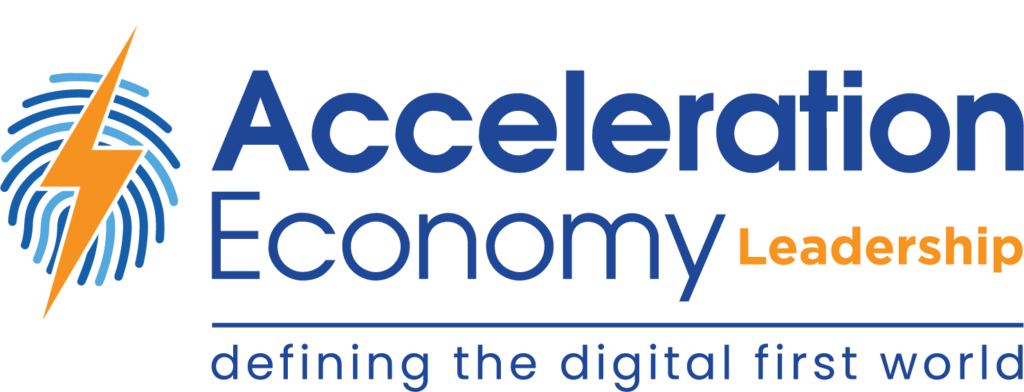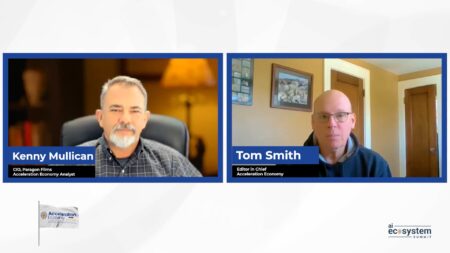In Episode 25 of the Growth Swarm podcast, Bob Evans, Scott Vaughan, and Tony Uphoff, who fills in for Acceleration Economy Co-founder John Siefert as host this week, discuss the nuances of today’s business technology purchase process and highlight the ways in which vendors must better understand how technology aligns with a company’s strategic initiatives, as well as focus on specific buyer needs.
Highlights
01:52 — Tony kicks off the episodes by discussing how Acceleration Economy analysts are practitioners from every walk of life, from CEOs and CMOs to CIOs and CTOs. They provide the platform with the reality, which they know from being out in the field, of how the business technology purchase process operates, and why it’s different today.
02:31 — Increasingly, the business technology industry is waking up to the buying process — 70% of the purchase process is opaque to the vendor. Consequently, buyers are beginning to express their desire that vendors begin to understand the buying process more.
03:26 — Businesses are investing millions of dollars into buying the right solutions and vendors are investing millions of dollars into building the right sales and customer service organization and creating demand — marrying the two concepts would be a big win for the industry, says Scott.
03:48 —The biggest difference in today’s world is the critical, strategic initiatives with which new technologies must align, and this is something that vendors must understand. It’s not technology for technology’s sake. It can be a messy process, but vendors are currently working to understand that process more and rethinking their approach in order to create demand and increase revenue.
05:42 — The “why” and “how” of the buying process are becoming a more nuanced conversation today — it is a business conversation where technology is the outcome, whereas previously it was often mostly a technical conversation.
06:35 — The model of the buying process is linear and unchanging. However, the pace of input has changed within the buying process, so the vendor’s language needs to be updated to reflect that. Culturally, this can be hard to do.
08:18 — Vendors must consider how to speak in the voice of their customers in order to change the culture of the buying process. A vendor’s language must change in order to first reflect the scope of the outcome and the buyer’s focus, before backtracking to explain how technology plays a role.
09:52 — The dynamics of the buying process have changed as the procuring of technology has shifted. Industry clouds and multi-clouds have led to the development of partner ecosystems, which means that buyers are no longer buying from one vendor — the purchase process has dramatically changed as a result. A great focus on the buyer’s needs is the way to eliminate tech-centric thinking.
10:54 — Scott introduces the complexity and the critical nuance of the “who” as a factor in the overall buying process. Could there be vertical experts, systems integrators, and partner ecosystems who could add unique value to the buying and deployment experience?
11:45 — The best, most fluid sellers are the ones who have broken down the silos around the notion of speed in the overall buying process. By contrast, customers have smashed down the silos that have made the buying process timely and complex — this is not always explicitly recognized by vendors, to their detriment.
13:02 — Tony enacted a five-year transformation while serving as the CEO of ThomasNet.com and has seen vendors come into companies and attempt to sell products based on their template, ignorant of customers’ needs.
13:41 — Tony speaks about his experience working with vendors who approach the process without regard for the customer, which was, at times, frightening and frustrating. Oftentimes, vendors would come in with a proposed solution as to how their product can cater to buyer needs but failed to acknowledge the specific needs.
17:24 — Every client is different, which creates a variety of opportunities for vendors to focus and deliver on buyers’ needs. Companies that are breaking silos — thanks to technology and data — are empowering people. For vendors, this can be harder, as they “all in swim lanes” like product, operations, sales, and other silos. Increasingly, companies are focused on creating a unified, go-to-market strategy that will position product experts at the point of a company and its customer base.
19:03 — Listeners can continue the ongoing conversation about the vendor and buyer relationship in the overall buying process with the Growth Swarm team on LinkedIn.
Register here for your on-demand pass to view all content from Partners Ecosystem Digital Summit. The digital event, which took place on April 20, focused on analyzing the business and IT imperatives around cloud, AI, automation, data modernization, and cybersecurity that define the future of partnerships.
Want more tech insights for the top execs? Visit the Leadership channel:








